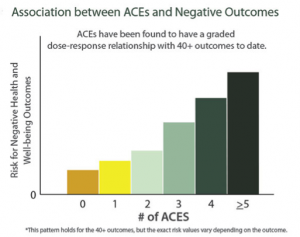Help! My teen has self-harmed. What do I do?
Finding out your teen is self-harming can be frightening. You may feel overwhelmed and ill-equipped to handle the situation, fearing you might make it worse. Finding out more about why teens self-harm and how to help them manage their intense emotions can be useful.
Self-harm - The facts:
- Self-harm is defined as intentional harming of one’s body without suicidal intent. It is usually done in places not visible to others.
- Approximately 12% of young people have engaged in self-harm previously.
Why do young people self-harm?
- To cope with an intense emotion
- To punish themselves if they feel guilty
- To try and replace emotional pain with physical pain
- To feel ‘something’, ‘anything’ if they feel numb, disconnected or alone
- To feel in control
- To express they need help
Signs someone may be self-harming:
- Wearing long sleeved clothing in warm weather
- Isolating themselves and withdrawing
- Scratches, cuts, bruises, scars with inconsistent explanations
How is self-harm and a suicide attempt different?
- Most young people self-harm as a coping mechanism, rather than to attempt to end their life.
- However, people who self-harm are also more likely than the general population to feel suicidal and to attempt suicide.
How do I tell the difference?
- Just ask - if you notice your teen is engaging in self-harm, ask them if they have thoughts about suicide. If they are, take them to a GP and psychologist for assessment and support.
- Experts agree that asking and talking about suicide does not make someone feel worse or ‘put the idea in their head’ – rather it provides relief.
What to say:
- Ask – have they been self-harming, what has been going on, how are they feeling about it, what are they thinking, what have they thought about what they could do.
- Then listen – you do not need to give advice or fix anything, unless they ask for it.
- Acknowledge their feelings - don’t minimise or tell them not to feel a certain way.
- Keep your reactions in check – if you feel scared, shocked, angry or blame yourself – breathe slowly and deeply, relax any tense muscles and get back to listening and acknowledging their feelings. If you react they may be less likely to communicate with you in future. Find other parents to connect with and discuss this and get your own support.
- Admit you may react or say something unhelpful. Admit you don’t have the answer. Tell them despite this, you care, you are there, you want to help.
What to do:
1. Get them to talk or express their emotions in other ways.
Whether to you, a friend, other family member, doctor or psychologist, teens need to express and make sense of their emotions. Ways to express emotion include:
-
- Talking
- Writing/journaling
- Singing
- Drawing
- Painting
3. Teach them alternate ways of coping with intense emotions.
Here are some ideas:
- Take a cold shower
- Hold an ice cube
- Draw on their skin on their area they have an urge to harm
- Intense exercise: push ups, star jumps, running
- Stretching
- Rip up paper
- Pop bubble wrap
- Deep, slow breathing
- Play a game
2. Build their resilience.
Young people build resilience through a sense of belonging. Help them to a join a group they may be interested in:
- Team sport
- Volunteering
- Part-time job
- Take up a new course
- Book club
- Chess club
4. Spend quality time with them
- Do something they love with them: play a game, sing karaoke, go to a skate park, shoot some basketball hoops. Teens equate quality time with being valuable and worthy of someone else’s time and attention. This builds self-esteem and ability to cope.
Where to get help:
- Parentline
- Free confidential telephone support for parents
- 1300 30 1300
- Free confidential telephone support for parents
- Calm Harm
- Smartphone app to help manage self-harm urges
- headspace
- Free telephone counselling for youth aged 12-25
- 1800 650 890
- 9am-1am
- Free face-to-face individual and group counselling with GP referral
- Free telephone counselling for youth aged 12-25



 This article was written by
This article was written by